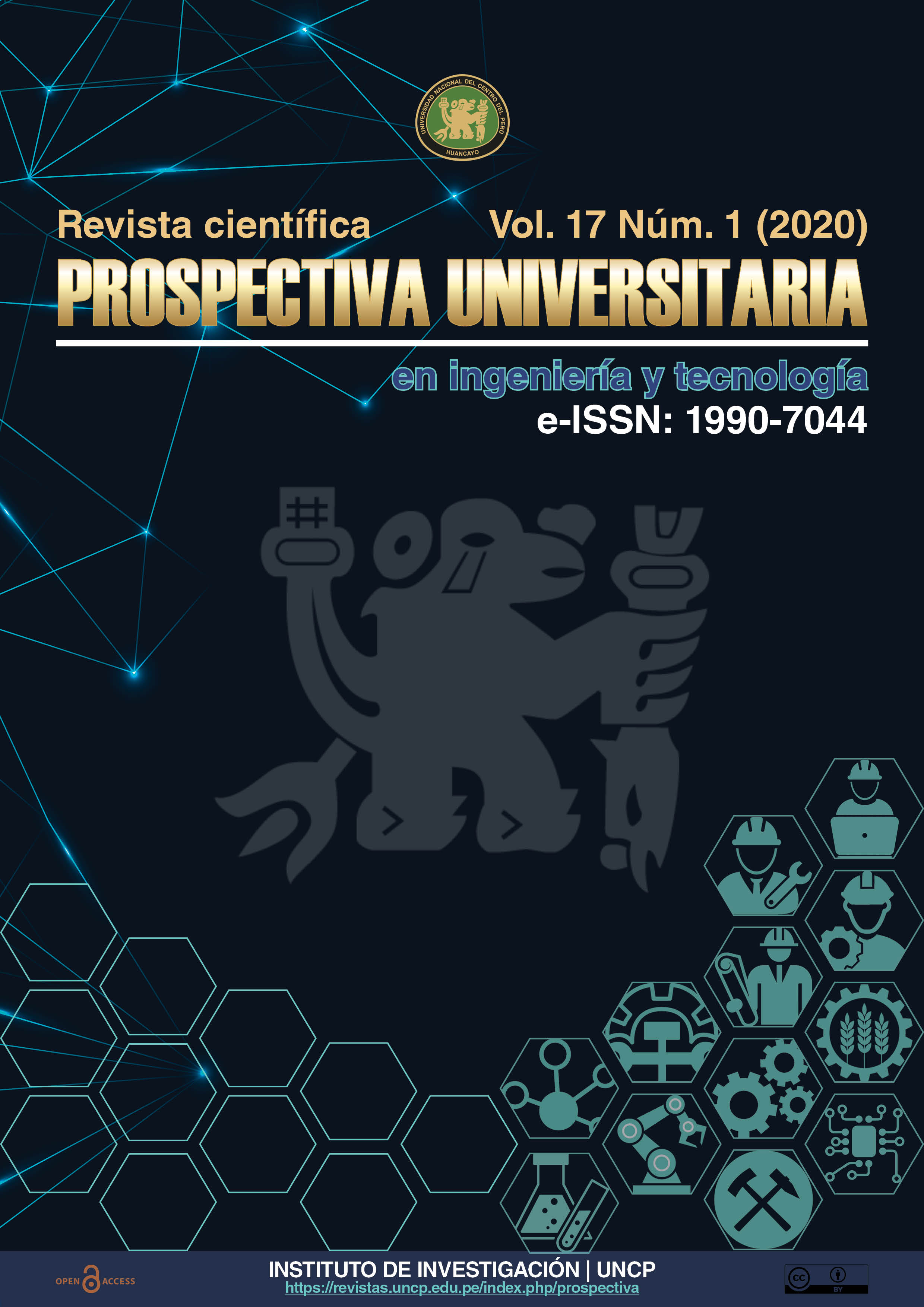Carbonización hidrotérmica de agua gris para obtener biocarbón libre de gérmenes
DOI:
https://doi.org/10.26490/uncp.prospectivauniversitaria.2020.17.1382Palabras clave:
Carbonización hidrotérmica, Agua gris, Biocarbono, Suelos degradados, GérmenesResumen
El resultado del procedimiento de carbonización de los residuos orgánicos es aplicable en la conversión una amplia variedad de residuos de biomasa para transformarlos en carbón y otros. La carbonización húmeda conocida como carbonización hidrotérmica es utilizable en todos los residuos producidos en la agricultura y ahora en los residuos de la cocina familiar y lo más resaltante es que tiene influencia en la calidad del carbón producido. El objetivo de la investigación fue producir biocarbono libre de gérmenes a partir de agua gris, los mismos deberán ser utilizados en la agricultura para la recuperación de suelos degradados. Mediante la metodología de diseño por combinación se obtuvo la configuración del prototipo de reactor de carbonización que integra un procedimiento continuo de la obtención del carbón, es decir, ingresa biomasa húmeda y entrega biocarbono molido.
El proceso de obtención de biocarbono fue realizado en los Laboratorios de Energías Renovables de la Facultad de Ingeniería Mecánica siguiendo un diseño factorial 23 como se muestran en la tabla No. 5. Las muestras obtenidas de carbón mediante el diseño factorial 23 fueron analizadas en el Laboratorio de la Facultad de Ingeniería Química de la UNCP. La combinación de los factores ADC entrega una calidad de carbón 0,99% libre de bacterias utilizando el método de análisis por foto luz. Mediante la comparación de los fundamentos teóricos y aplicabilidad se concluye que, la combinación ADC es un resultado favorable en la producción del carbón y su posterior aplicación en la recuperación de suelo ya que el carbón tiene una calidad favorable.
Descargas
Referencias
Cheng, F., Bayat, H., Jena, U. & Brewer, C. E. (2020). Journal of analytical and applied pyrolysis ımpact of feedstock composition on pyrolysis of low-cost protein-and lignin-rich biomass: A review. Journal of Analytical and Applied Pyrolysis, 147(August 2019), 104780. https://doi.org/10.1016/j.jaap.2020.104780
Elkhalifa, S., Al-ansari, T., Mackey, H. R. & Mckay, G. (2019). Resources, conservation & recycling food waste to biochars through pyrolysis: A review. Resources, Conservation & Recycling, 144(September 2018), 310–320. https://doi.org/10.1016/j.resconrec.2019.01.024
Felix, Larry, G. (2014). Bureau, International.
Fiori, L., Basso, D., Castello, D. & Baratieri, M. (2014). Hydrothermal Carbonization of Biomass: Design of a batch reactor and preliminary experimental results. Iconbm: International Conference on Biomass, Pts 1 and 2, 37, 55-+. https://doi.org/10.3303/CET1437010
G. Pahl, W. Beitz, J. F. & K. H. G. (2007). Engineering design: a systematic approach. Springer-Verlag London Limited (3rd editio).
García, J. G., López, N. C. & Calvo, J. Z. (2011). Estadístıca básıca para estudıantes de cıencıas.
Gutiérrez Pulido, H. & De La Vara Salazar, R. (2012). Analisis y diseño de experimentos.
Hernández Sampiere, R. (2010). Metodología de la investigación.
Libra, J., Ro, K. S., Kammann, C. & Funke, A. (2011). Hydrothermal carbonization of biomass residuals: a comparative review of the chemistry, processes and applications of wet and dry pyrolysis. (May 2014). https://doi.org/10.4155/bfs.10.81
Lu, J., Chang, Y., Poon, C. & Lee, D. (2020). Bioresource Technology Slow pyrolysis of municipal solid waste ( MSW ): A review. Bioresource Technology, 312(May), 123615. https://doi.org/10.1016/j.biortech.2020.123615
Novak, J., Lima, I., Xing, B., Gaskin, J., Steiner, C., Das, K., Busscher, W. (2009). Characterization of designer biochar produced at different temperatures and their effects on a loamy sand. Annals of Environmental Science, 3(1), 195–206.
Ottmar Edenhofer & Ramón Pichs-Madruga, Y. S. (2011). Fuentes de energía renovables e informe especial sobre fuentes de energía renovables y mitigación del cambio climático.
Descargas
Publicado
Número
Sección
Licencia
Derechos de autor 2020 Lazo Baltazar, Brecio Daniel

Esta obra está bajo una licencia internacional Creative Commons Atribución-NoComercial-CompartirIgual 4.0.
Esta Revista es de acceso abierto a su contenido a través del Internet, poniendo a disposición de la comunidad científica los resultados de la investigación, de manera gratuita, para el intercambio del conocimiento desarrollado.
El contenidos de la Revista se distribuyen bajo la licencia Creative Commons Reconocimiento-NoComercial-CompartirIgual 4.0 Internacional.
![IconJournalPU [ESP] by Edgar Julian-Laime®](https://revistas.uncp.edu.pe/public/journals/1/pageHeaderLogoImage_es.png)









